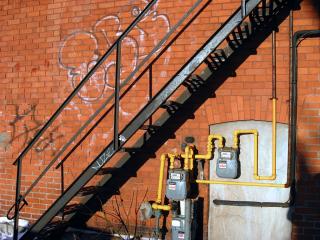
Not content with data from satellites, a group of British researchers made the trek to the remote Pine Island Glacier in order to gauge whether climate change is accelerating its flow into the sea. The team is only the second group of humans to ever visit the area, following a brief visit by American scientists in 1961.
The Pine Island Glacier comprises about 10% of the West Antarctic Ice Sheet which, along with Greenland, represents the largest plausible contributor to sea level rise. The total melting of this one glacier would raise global sea levels by 25cm. The melting of the entire region of West Antarctica where it is located would contribute 1.5m.
Experiments performed included an examination of the ice structure using towed RADAR and the use of small explosions and geophones to identify soft sediments that might be lubricating the flow of the glacier. GPS receivers have been left behind to perform additional precise tracking. Their central conclusion is a significant acceleration of the glacial flow, compared with the 1% flow rate that satellite measurements tracked during the 1990s:
“The measurements from last season seem to show an incredible acceleration, a rate of up to 7%. That is far greater than the accelerations they were getting excited about in the 1990s.”
Since air temperatures in Antarctica have not risen significantly (as predicted by all General Circulation Models), it is plausible that the acceleration is the result of warmer sea currents.
Some component of the melting could be the result of geothermal activity. If so, it would continue to some extent even after global greenhouse gas concentrations were stabilized and their full consequences have been manifest through the climate system. Of course, the lower that concentration, the greater the chance that West Antarctica’s glaciers will be able to endure.




